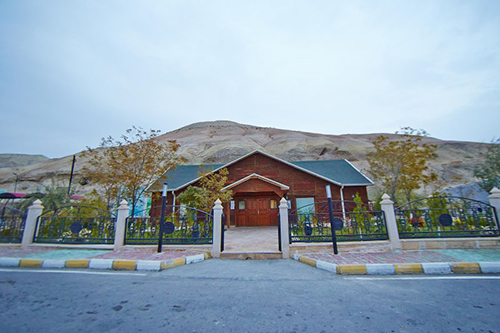
Nakhchivan Physiotherapy Hospital, which is situated in Nakhchivan Salt Mine Base, located at an altitude of 1173 meters, started to function on December 29, 1979 as a hospital with capacity of 50 beds.
In 1983 the capacity of hospital was reached to 100 beds. In 2003, the hospital was renovated and equipped with modern equipments.
Duzdag Physiotherapy Center has been granted with the status of public legal entity by the decree of the Chairman of the Supreme Assembly of Nakhchivan Autonomous Republic dated December 21, 2017 and is currently operating with 474 beds.
The underground department is located within salt mine in mountain workshop 300 meters far from the entrance in 110 meters of depth at 10 worked stroke.
Nakhchivan Physiotherapy Hospital has the following parameters of healing influence:
1. The ground surface climate:
a) Altitude of area -1100 meters
b) Annual average temperature 12-24 oC
In January -20-25oC, in June 35-40 oC
c) Relative humidity 40-45%
d) Annual amount of rainfall 200-300 mm
e) Atmospheric pressure 655 mm Hg
f) Average annual sunny days -260-280
2. The underground department microclimate
a) Altitude-1173 meters
b) Temperature 18-20 oC
c) Atmospheric pressure 682 mm Hg
d) Relative humidity 23-35%
e) Weather flow speed 0,1 m/s
f) High-dispersed Na+Cl+ ions
While not ill – 17.5-21 ml/m3
While ill – 12.5 ml/m3
g) Oxygen – 20%
h) Noise -15-20 DB
The thickness of salt mine is 8,2 meters; the content of Duzdag salt: NaCl-98,4%; CaCl-0,04%; MgCl-0,06%;
When the patients are in the mine the temperature may increase 0-5oC and relative humidity 5-10%.
In Nakhchivan Physiotherapy Hospital the speleotherapy is conducted in conformity with the methodical recommendations of Uzhgorod hospital in Ukraine. The patients, during 2-3 days get adapted to hospital zone. In the following period the adult’s stay in the underground department for 20-24 seances, while the children for 14-18 seances from 20:00 till 8:00. Depending on severity of the disease and recovery of the patients this period may change.
When the treatment finished, 65-70% recovery in adults and 80-85% in children is observed.
Besides going to salt mine, if needed the patients are supplied with some medications, physiotherapy procedures, physical therapy, thorax massages and so on. The medications are recommended as less as possible (if the patient is getting the corticosteroids, the doze is gradually decreased). Speleotherapy is carried out in the period without asphyxiation or within the period of remission.
The advantage of Nakhchivan Speleotherapy Hospital among the other salt mines is that it is located in horizontal position. The patients enter the underground section already adapted. Here, in chess-like strokes, the ventilation is natural; the weather flow speed is about 0,1m/s. The salt mine is stable with natural and high disperse Na+ Cl+ ions. Microbes are few in the salt mine. The hospital is situated in highly ecological clean zone. For this reason there is no poisonous gas (methane gas).
There are following indications and side effects for the speleotherapy:
Indications:
1. Pre-asthma;
2. Intermittent asthma, intermittent and mild persistent inflectional-allergic and atopic asthma;
3. Intermittent asthma, breath deficiency the I and II levels, heart failure stage A; pneumonia the I and II phases (remission phase);
4. Intermittent asthma, with collateral chronic non-obstructive bronchitis and chronic pneumonia the I and II phases (remission phase);
5. Components of chronic asthmatic bronchitis (remission phase);
6. Allergic rhino sinusoid pathologies (remission phase);
7. Pollinosis;
Absolute side effects:
- Severe phase of all diseases including bronchial asthma;
- Mild persistent asthma;
- Intermittent asthma (heavy running), diffuse pneumonia sclerosis, severe breath deficiency, heart failure stage C;
- Bronchial ataxia;
- Lung abscesses and gangrenes;
- Pulmonary tuberculosis (in all forms and phases);
- Deficiency of blood circulation the 3rd phase;
- Compensated and decompensated heart failure;
- Stenocardia
- Mild Hypertension;
- Gastroduodenal erosions;
- Thyrotoxicosis;
- Kidney stone disease;
- Anemia;
- Diabetes – the II-III levels (dependant on insulin).
- Chronic hepatitis
Relatively side effects:
1) Absence of upper and lower limbs;
2) Enuresis;
3) Chronic polyarthritis;
4) Anatomical pathologies of the nasal cavity (polyps, adenoids);
5) Chronic hepato-cholecystitis.

 duzdag@nakhchivan.az
duzdag@nakhchivan.az



